“High And Mighty: A century of Western Mountaineers Football,” is now available for purchase. For those interested in buying the book, you can reach out to Randall at Jcrandall1473@gmail.com to order a hardcover or paperback copy.
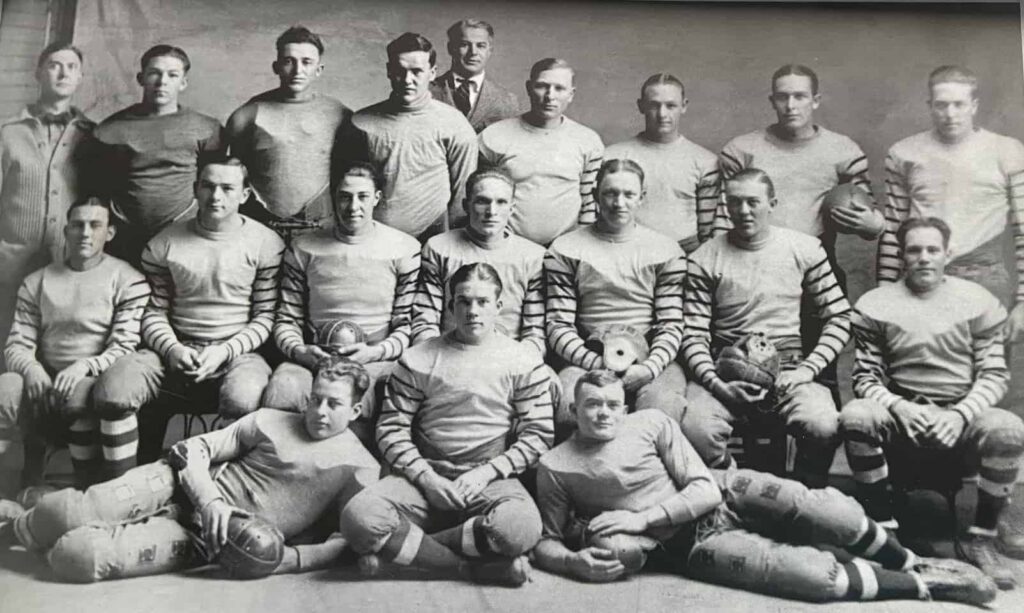
“I was a high school coach who had a lot of [state] connections … I met coaches from all over the state of Colorado. The guys that I know that went to Western have greater connection and affinity for each other than any other school in the state,” says John Randall, a former Mountaineer Football player and Western alumnus.
In 1953, Randall’s family came to Gunnison when he was just two years old because his father, Dr. Edwin H. Randall, had accepted a position as an education professor. Dr. Randall would teach at Western for three decades, becoming the dean of the college’s graduate school.
John’s father was also involved in Mountaineer athletics as the school’s faculty representative to the Rocky Mountain Faculty Athletic Conference. Abbreviated as RMFAC then, the conference was controlled by the faculty at that time, not the presidents. In 1967, the university presidents would take control and the conference would drop the “faculty” from its name.
In the 1950s and 1960s, a young John Randall grew up attending Gunnison public schools, playing defensive back, and taking in a heavy dose of Mountaineer Football and athletics.
He remembers attending Western’s first-ever postseason game, the Mineral Water Bowl in Excelsior Springs, Missouri in 1964, in an era before college football playoffs. Western State lost a 14-13 nailbiter to North Dakota State (now an FCS powerhouse) after having a punt return touchdown called back.
In 1969, Randall enrolled at Western, the only school he seriously considered. He played football for the Mountaineers and earned a bachelor’s degree in history in 1973. Randall looks back on that time period with great fondness and has maintained relationships with many of his former teammates.
“I had an assistant coach at one point who said, ‘My god, everyone you know is from Western, you’ve got to be the biggest small college in the world,'” he says with a laugh.
Randall remembers flying from Denver to Gunnison his freshman year at Western with about 20 of his Mountaineer teammates. The players had recently arrived on campus when his teammate and future friend Jim Soltesz turned to him and asked: “Where’s the town?”

A Mountaineer for life
After graduating, Randall wasn’t quite done with Western, going on to earn a master’s degree in social studies with an emphasis in history in 1983. His graduate paper was a history of Mountaineer Football from 1914 to 1977 called “Little Red”, which can be found in the Leslie J. Savage library.
Randall spent 30 years teaching history and coaching high school football in Colorado public schools in Montrose, Rifle, and Cañon City, including a stint as the first head coach of Ponderosa High School in Parker.
Now retired, Randall’s background at Western, his personal connections to former Mountaineer players, coaches, athletic directors, and presidents, and his history chops put him in a perfect position to recount Western’s century on the gridiron.
Randall’s father was a close friend of Paul Wright, “the grand old man of Western athletics”, a longtime professor, coach, and athletic director who helped establish the university’s NCAA skiing program — and led Mountaineer Football to the young program’s best season yet in 1937, when they went 5-3.
Expanding on his earlier paper, Randall has written a new book slated for fall 2023 release: “High And Mighty: A Century of Western Mountaineers Football,” a historical narrative of Western’s football program from its initial creation all the way up through the 2022 season.
“I have a historian’s memory,” notes Randall of his uncanny ability to rattle off stories and names from decades of Mountaineer lore.
In writing the book, Randall spoke with more than a hundred Mountaineer coaches, players, administrators, and others involved with the team, including many of his former teammates, as well as players who preceded him, like Stan Pursley, quarterback for the 1959 Mountaineers, who has become a personal friend.
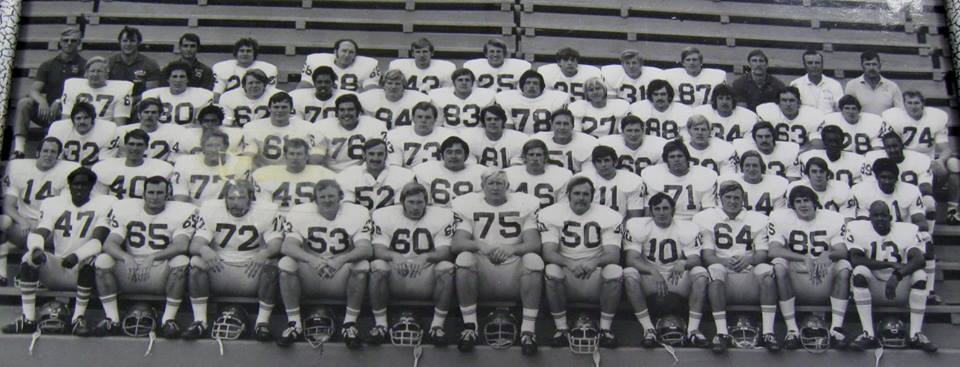
The early days of Mountaineer Football
1914 was the first year that football was played in Gunnison. John says the town’s first game pitted a group of students from both Gunnison High School and the Colorado State Normal School (what would later become Western) against a pickup team composed of faculty and townspeople.
Less than a decade later, the first organized Mountaineers squad played four games in their inaugural season. Their schedule included a matchup with Colorado College, then a major power in the region. The nascent Mountaineers squad lost in a 58-0 blowout.
But the Mountaineers did pick up their first-ever victory against the State Normal School of Colorado (now known as the University of Northern Colorado) in Gunnison 6-0 and tied an all-freshman team from Colorado College. They ended the season with a 1-2-1 record.
The first Western squad had roughly 15 players who played nearly the entire game on both sides of the ball. Around that same time, Randall says that Gunnison High School was one of the top football teams in the state, beating up on teams from much larger towns like Grand Junction, Montrose, Alamosa, and Fort Collins.
In those early days, the Colorado State Normal School and Gunnison High School shared a building, known as North Hall (now part of Taylor Hall) — and a football coach, A.C. Krause.
“The rules were so lax at the time that they didn’t take eligibility all that seriously,” explains Randall, adding that college students played on the high school football team.
During Western’s second season, a player named Buell Crawford sustained a broken leg during a game, requiring hospitalization. In an era before Highway 50 and the Gunnison hospital, Crawford was put on a narrow-gauge train and evacuated to a hospital in Salida to receive medical care. Tragically, he developed blood poisoning and died. Western’s gymnasium, which later became Crawford Hall, bears his name.
Western’s first football field, replaced in 1948 by the Mountaineer Bowl, was also named for Crawford. The completion of the Mountaineer Bowl, an idyllic, spartan venue boasting unbeatable views of mountains and sagebrush from its stainless-steel bleacher seats, was a major moment in Western football history.
“When I played on it, it was the best field and stadium setting that we played [at],” says Randall of the bowl, the highest collegiate football stadium in the world at 7,771 ft.
The Mountaineer Bowl has undergone several facelifts in its 75-year history, but none more significant than its current $15 million renovation. The modernization, which is currently underway, includes overhauling the press box, updating the stadium’s restrooms, playing surface, and concessions, installing lights, suites, and a new scoreboard, creating additional parking, and adding locker rooms for both the home and visiting teams as part of a new entrance complex.
The evolution of the Rocky Mountain Athletic Conference
Since the beginning, Western’s had a heated relationship with its neighbor to the east, Colorado School of Mines. Western’s longest rival, early showdowns with the Orediggers trace back to the 1920s.
In addition to Mines, Western’s early teams played some stiff competition, including Colorado State, Utah State, and the University of Wyoming, all schools that now belong to the Mountain West Conference in NCAA Division-I.
Western also played the University of Colorado (now part of the Power 5 PAC-12 conference) four times in the program’s first six years, scoring just six points across four blowout losses, three of them shutouts.
In 1937, five of the Rocky Mountain Faculty Athletic Conference’s biggest schools — Colorado, Colorado State, Brigham Young, Utah, Utah State, Wyoming, and Denver — held a secret meeting and left the RMAC to form the Skyline Conference, which went defunct in 1962.
Those surprise departures left the original conference with just the “Little Five”: Western, Colorado College, Colorado School of Mines, Montana State, and Northern Colorado.
From the late 1930s all the way into the mid-2010s, new members came and went from the RMAC, sometimes dropping off due to financial constraints or joining other conferences, only to return.
As of 2023, the RMAC has 15 full members, 10 of which field football teams. Six hail from Colorado: Mines (original member in 1909), Western (joined 1922), Colorado Mesa (joined 1975), CSU-Pueblo (rejoined in 1996 after several entrances and departures), Adams State (joined 1956), and Fort Lewis (joined 1994, after an earlier departure)
When Randall was growing up in the 1950s and early 60s, Colorado’s fiercest rival was what is today known as University of Northern Colorado. In 1957, the college renamed itself to Colorado State College from its previous mouthful of a name: “Colorado State College of Education, at Greeley.”
“We never called them Colorado State growing up, it was always [just] Greeley,” notes Randall.
As he was entering his teenage years, Western’s rivalry with its southeastern neighbor Adams State — stoked by the school’s joining of the RMAC — truly caught fire. In Randall’s junior year, Adams State came to Gunnison having already clinched the RMAC title and eyeing a prospective bowl bid. Western had other plans, crushing Adams 40-10 in a rout.
“There was a riot on the field that was started not by the players, but by the fans coming out of the stands,” recalls Randall. “We were up like 35-10 at the time and our coaches were frantic because they thought we were gonna have to forfeit.”
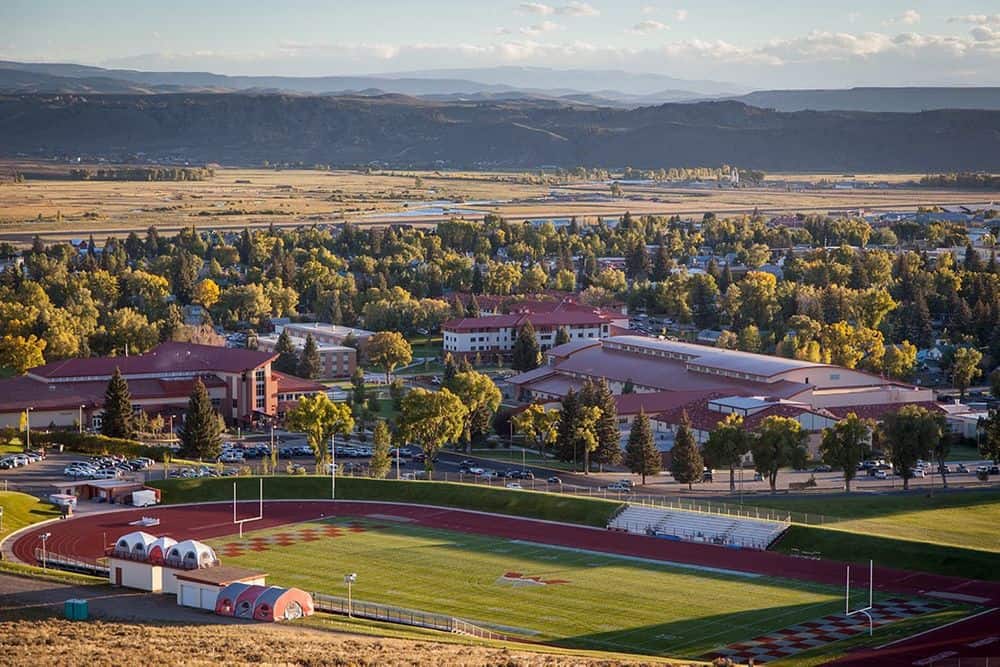
Coaches Pedersen and Dalton Mountaineer Football
Throughout the course of Western’s history, the program has punched above its weight, scheduling opponents from far larger schools, often simply for geographic convenience.
Many of those opponents would go to become Division-I, including the University of New Mexico, New Mexico State, and the University of Nevada, all schools Western has beaten. But through the program’s first 30 years, playing much larger schools held the Mountaineers back from consistent success.
In 1953, Pete Pederson, originally from Pueblo, began his tenure as head coach. Pederson had played both football and basketball for Western in the early 1930s and went on to coach Western’s basketball team and play several seasons in the National Basketball League.
By the time he was hired at Western, Pederson had made football coaching stops at two schools in the Ohio Valley — Mount Union and Marshall — and brought with him a host of connections in the football world, including to legendary coach Bud Wilkinson. Wilkinson’s mid-century Oklahoma Sooners squads won three national championships.
Utilizing his personal network, Pederson expanded Western’s recruiting range much further east. Previously, the team’s recruiting had been largely confined to Gunnison County, the San Luis Valley, and the greater Western Slope.
Coach Pederson’s teams ran the split-T formation that was invented at the University of Missouri, and that Wilkinson had deployed to dominate the college football landscape with the Sooners. The new offense quickly elevated Western’s teams.
In his second season in 1954, Pedersen booked a road game at Cal Poly San Luis Obispo. Heading into the matchup with the Mustangs boasting a stellar 9-1 record, the Mountaineers emerged victorious in central California.
Later on, Montana State, their lone loss on the year, forfeited their win for utilizing ineligible players. 1954’s 10-0 season remains Western’s only claimed undefeated season in program history, as well as the program’s first RMAC title.
Just under a decade later, the Mountaineers would flirt with perfection once more. Randall maintains that the 1963 season under a young O. Kay Dalton, which ended with an 8-1 record, should also be counted as undefeated because the team’s sole loss came to Northern Arizona University, who later forfeited due to an ineligible player. That triumphant 1963 season kicked off four consecutive RMAC championships for Western.
In John’s view, Dalton was the best recruiter that Western’s ever had, coaxing athletes from much larger schools, including the University of Iowa, University of Wisconsin, and Colorado, to come to rural Gunnison.
Coach Dalton won 73 percent of his games during his five-season tenure at Western in the 1960s before leaving for a stint as a professional assistant up in Montreal. He made a number of other Colorado stops in his coaching career, finishing as the head coach at the University of Northern Colorado in the early 2000s. To this day, he holds the highest winning percentage of any coach in Mountaineer history.
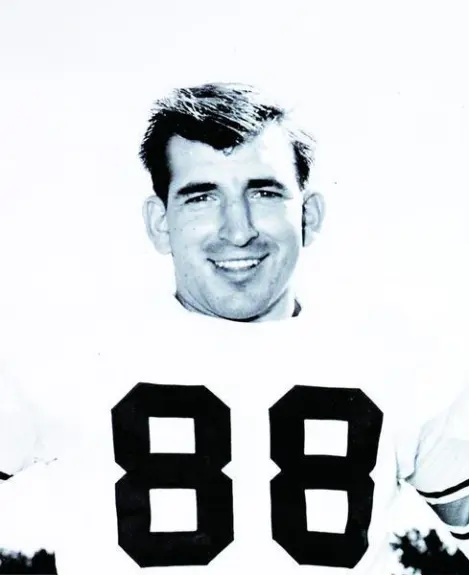
The Noxon Years: Western finds sustained success
After a brief downswing under short-lived coaches Oliver H. Woods and Gordon Zapp, Western wouldn’t wait long for another transformative coach. Bill Noxon, a former halfback and defensive end for Colorado A&M and Fort Lewis (then a junior college) took the reins in 1971 after proving his chops as a successful high school coach in Grand Junction and Fruita.
“He had a statewide reputation, and we started getting really good players from the state of Colorado,” says Randall, who notes that Noxon quickly changed the program’s culture for the better, transforming Western into a veritable offensive juggernaut.
“All the sudden Western goes from being the doormat, to being one of the favorites of the conference,” he adds. “We moved the ball on anybody.”
Randall’s favorite memory as a player came under Noxon, when Western crushed Alamosa 34-6 to win sole possession of the RMAC championship.
“Starting the night before the game a group of Western athletes, students and faculty actually ran a football from Mountaineer Bowl all the way to Adams’ Rex Field,” recalls Randall. “They entered the stadium just as we were going on for warmups. Obviously, it was a huge boost to our morale.”
When that early recruiting success translated to wins, Noxon was able to start recruiting players from out-of-state. Noxon holds the record for most wins by a coach with 87 over his 14-season career.
With Noxon at the helm, Western won the RMAC eight times in the 1970s, including a dominant stretch of seven championships in a row before his retirement in 1984.
After a rough three-year tenure from Hal Rogers, Carl Iverson became Western’s coach in 1988 after proving himself in the top job at Western Oregon. After a tough start — and under pressure of being canned — Iverson delivered in 1991, amassing six more RMAC titles throughout the 1990s. That brought the Mountaineer’s total to 19, more than any other school.
Western falters amidst stiff RMAC competition
In 2001, Iverson left to return to Western Oregon. At the institutional level, Randall says that the university’s investment in the football program had gradually fallen around the turn of the century.
Accompanying that decline was the notion among university leadership that Western was not a football school, an idea Randall dismisses by pointing to Western’s history of RMAC success through the decades, particularly under legendary coaches like Pedersen, Dalton, Noxon, and then Iverson.
Randall says that at a time when other RMAC schools were plugging money into their football programs, mostly from private donors, the Mountaineers were lagging behind financially.
Western, which has always faced barriers in recruiting and fundraising with its small size, isolated location, and notoriously harsh weather, was losing the arms race over scholarships and facilities. All these factors contributed to the team being out recruited by its regional conference rivals.
Coach Jeff Zenisek’s tenure, which began in 2001 and lasted a half decade, saw mixed results. His successor, Pat Stewart, had a rough go of things in his five seasons, leading to his dismissal in 2010.
Shortly thereafter, a number of committed fans and alumni (including Randall himself, a charter member) came together to start the Mountaineer Football Alumni Association (MFAA) in 2014, in an effort to boost the program’s competitiveness. Since its creation, the MFAA has contributed about $500,000, predominantly for player scholarships.
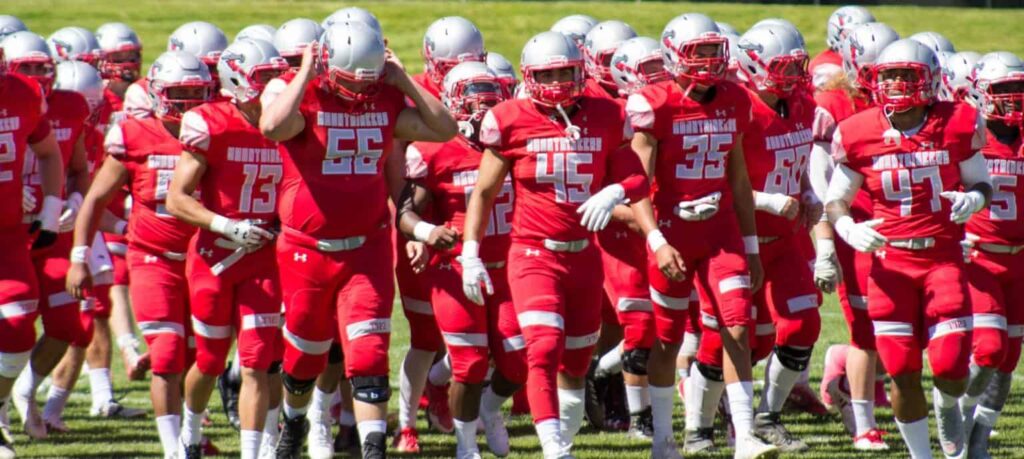
Coach Bains take the reins
Following Stewart’s firing, Western’s defensive and special teams coordinator Jas Bains, who had been an assistant coach for just a year, took over.
Bains battled through back-to-back 1-10 outings in 2011 and 2012 to steadily increasing success, largely attributable to the recruitment of Austin Ekeler, a running back from Eaton, Colorado.
Despite his success at Eaton, Ekeler was a zero-star recruit with no Division-I scholarship offers. He chose Western over offers from RMAC rivals Adams State and Chadron State, who were concerned about his size and wanted Ekeler to switch to defense.
Upon his high school graduation, Ekeler quickly moved to Gunnison and attained a job as a whitewater rafting guide in Almont. “He was committed basically immediately,” recalls Randall. “As soon as he got in the weight room during summer workouts, everybody knew that this guy was special.”
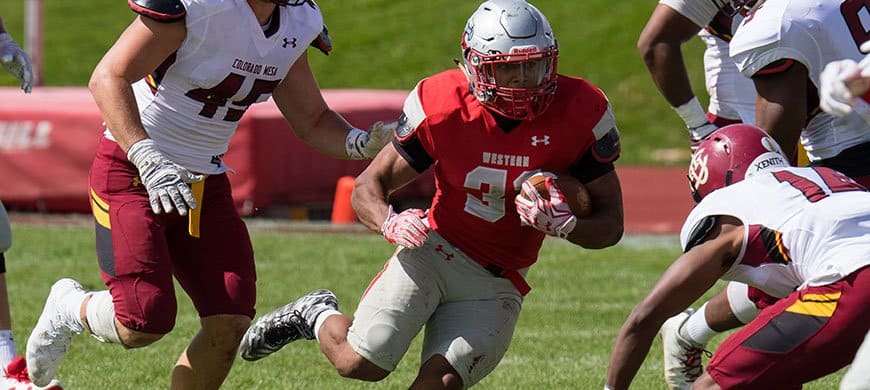
Ekeler saw major playing time as a freshman and only improved from there, leaving Western as the program’s all-time leader with 5,857 rushing yards. In his senior season in 2016, he earned a nomination for the Harlon Hill Trophy, essentially the Heisman Award for Division-II players.
Randall has nothing but praise for Ekeler, who in addition to his on-the-field accolades collected multiple academic honors over the course of his Western career, studying energy management.
“There has never been a more personable, nice young man than Austin Ekeler,” glows Randall. “My wife and I had dinner with him at a Hall of Fame banquet and he was as unassuming and modest as you can be.”
The Ekeler era culminated with a 7-4 season in 2016, with big in-conference wins over Adams State, Chadron State, and Colorado Mines.
After Ekeler graduated and worked his way onto the LA Chargers as an undrafted free agent, where he would later become an NFL superstar, the program entered a rebuilding phase. The Mountaineers regressed to 1-10 in 2017.
But as future standouts like defensive end Will Lydle and running back Joshua Cummings entered the program as redshirts in 2016 and 2017, respectively, and gained experience, the team began to exhibit signs of life.
In 2019, Western notched a 30-28 win against Western Slope rival Colorado Mesa, their first victory in the Western Slope matchup since 2013. All but one game of the 2020 season was canceled due to COVID, but the Mountaineers came out swinging in 2021, winning 10 games and reclaiming their first RMAC title since 1998.
A playoff berth ended in a hard-fought 31-24 loss to University of Nebraska-Kearney in a trip to the Division-II playoffs, Western’s first appearance in the postseason since 1997.
Looking ahead, Randall sees a bright future for the Mountaineer’s football program under Coach Bains in an increasingly cutthroat and competitive RMAC conference.
“Jas went through hell and high water,” says Randall, who emphasize the importance of the positive team culture Bains has instilled in his young men. “I’d put him in the class of the great coaches of Western [history], because he stayed with it.”
Through the ups and downs, here’s to another 100 years of Mountaineer football.
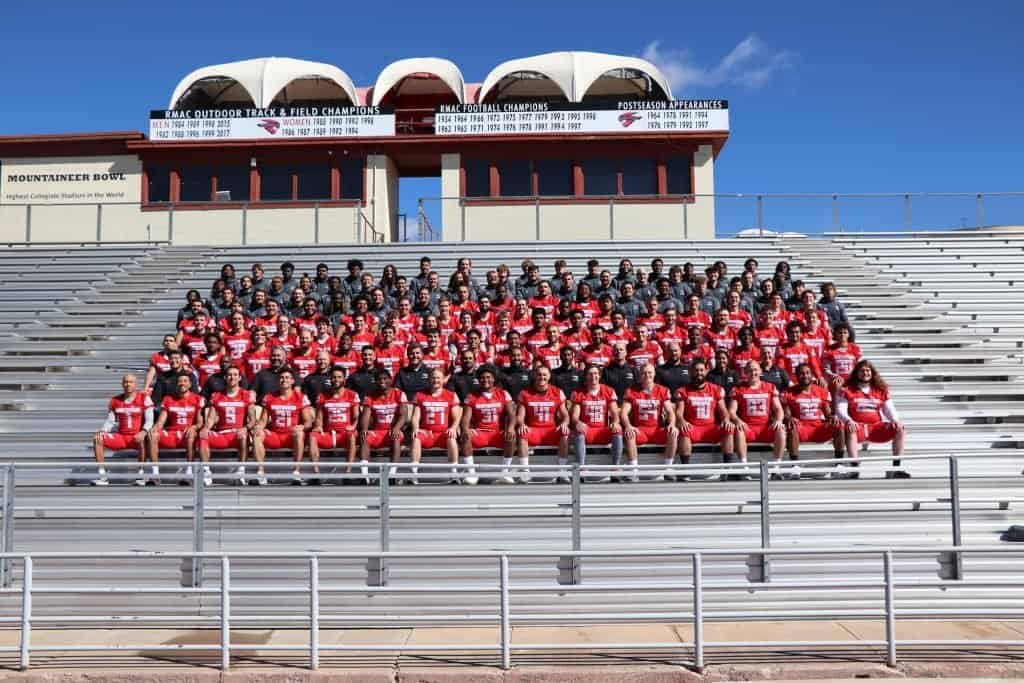
Getting involved
For those interested in buying Randall’s book, you can reach out to him at Jcrandall1473@gmail.com to order a hardcover or paperback copy of “High And Mighty: A Century of Western Mountaineers Football,” which Randall hopes will be published and ready this fall, in the leadup to 2023’s Homecoming Weekend, scheduled for Sept. 29 through Oct. 1.
You can also follow along with Mountaineer Athletics on Instagram and on the program’s website. You can also join the Mountaineer Football fan page on Facebook.
Interested fans can get more involved with Mountaineer Football by joining the Mountaineer Football Alumni Association.

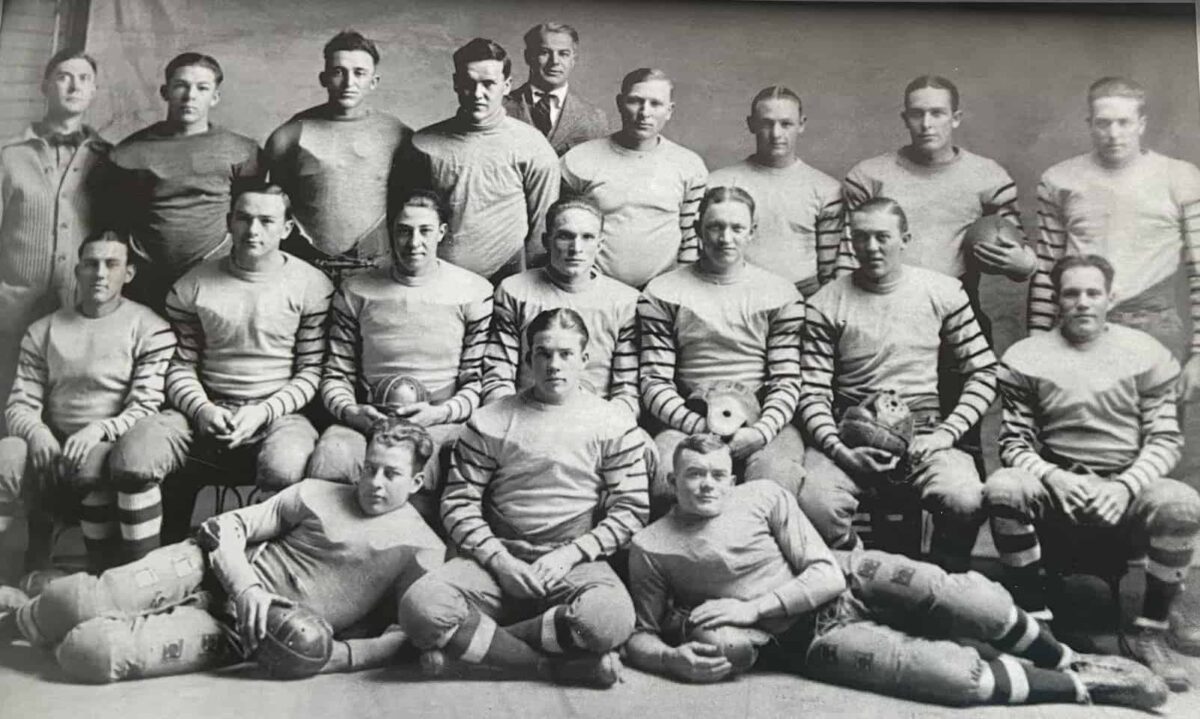
GREAT JOB JOHN
I LOVED READING ALL OF THIS !!
COACH DALTON WAS A GREAT COACH AND I WILL NEVER FORGET HIM AND GOT TO VISIT WITH HIM OFTEN HERE IN GREELEY !!
WESTERN STATE COLLEGE WILL ALWAYS BE THE NAME I REMEMBER IT BY AND UTE HALL WITH ALWAYS BE SPECIAL TO ME !!
I LOVE BEING ABLE TO KEEP IN TOUCH WITH MY TEAMMATES AND CALL THEM SEVERAL TIMES A YEAR TO SEE HOW THEY ARE DOING AND REMINISCE OUR DAYS AT WSC !!
THANK YOU FOR ALL THE WORK YOU DONE ON THE HISTORY OF WSC AND CREATING WESTERN STATE FRIENDS !!
AN HONOR KNOWING YOU JOHN
Both my uncles played at Western in the 50’s, Frank and Bob Zanetell, I was offered a scholarship there in 1968 but chose to go to a community college